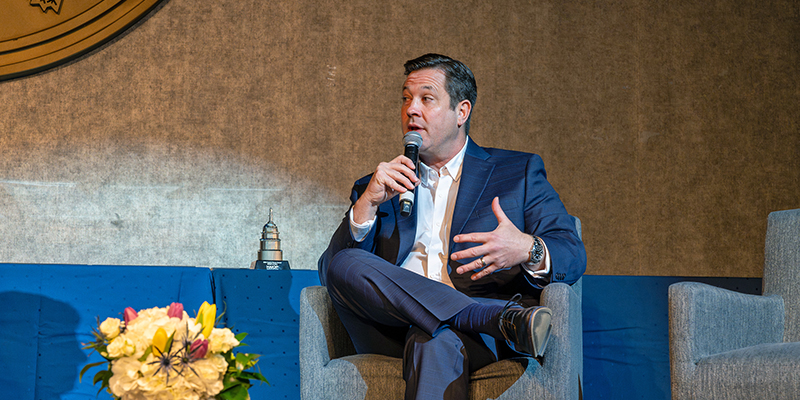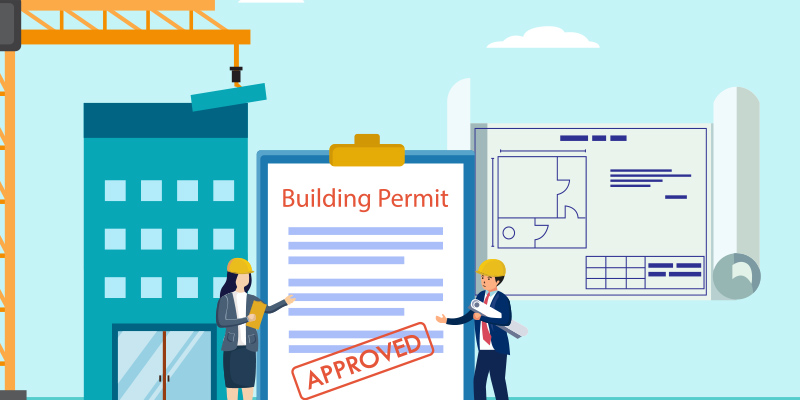The Hudson Tunnel, through which 450 trains carry 200,000 passengers every day, was constructed before the Titanic first sailed and soon after the Wright Brothers first flew. It’s time for an upgrade.
The Portal North Bridge, which takes trains over the Passaic River in that same corridor between New Jersey and New York, was built in the same era and is in similar need of replacement. These aging railroads represent the “single point of failure for the entire Northeast Corridor,” said John D. Porcari, interim executive director of the nonprofit Gateway Program Development Corporation. The Gateway Program was created to address infrastructure pain points along a sector of the Northeast Corridor. Porcari spoke at CRE.Converge 2018, in Washington, D.C., as part of a discussion on the state of infrastructure in the U.S. Public-private partnerships (P3), like the one Gateway is spearheading to facilitate the flow of commerce, are critical to infrastructure projects.
Twenty percent of the nation’s gross domestic product comes from the Northeast Corridor, so keeping both people and goods moving efficiently is essential. Trains running through the Hudson Tunnel – which flooded in 2012 during Hurricane Sandy and hasn’t been the same since – transport more passengers than all of the New York and New Jersey airports combined.
The cost of replacing the tunnel isn’t insignificant, Porcari explained, coming in at $12 billion, with contributions already pledged by New York and New Jersey. Gateway is in the midst of a request for information process to find additional private investors, and is seeking federal partners to fully fund the projects.
“There’s no project in America with more direct linkage,” Porcari said, to how business moves throughout the country. “This project will likely serve the next two or three generations.”
Fortunately, 2018 has been a record year for private equity firms raising money for infrastructure projects.
Session moderator Keith Stauber, managing director, ports, airports and global infrastructure for JLL, discussed the Harbor Performance Enhancement Center, a public-private partnership underway at the Port of Los Angeles, one of the world’s busiest ports challenged by the increasing demand for and shipping of goods. The Port sought public bids to help make better use of 100 acres owned but underused by the port. “The winning bid,” Stauber explained,” also helped solve the congestion problem by using a kind of valet service to help the port get containers back into the system. It’s a nice win for the Port, with which it shares revenue, and there’s a minimum return guarantee for investors.”
More cargo ships coming into port require more cargo trains, and we have “waves and waves of freight coming all at once,” said Darrell Wilson, assistant vice president for government relations of Norfolk Southern. “That’s driving longer trains, it’s more asset-intensive. We’re moving freight as quickly as we can, which is putting stress on trains and on rails and bridges.” Norfolk Southern’s trains cover 19,500 route miles across 22 states and Washington, D.C., including 9,700 bridges. Some of that track and some of those bridges are 130 years old. “In our Heartland Corridor from Norfolk to Columbus to Chicago, we had to take the tops of all these tunnels that were a foot too short.”
Norfolk Southern entered into a public-private partnership with the Columbus Regional Airport Authority to open the Rickenbacker Intermodal Facility and Logistics Park in 2008. The project was so successful they have expanded three times and expect to run out of room within the next five years.
On a smaller scale, but no less important to those who live and work there, are Reston Station and Loudoun Station, two sizeable transit-oriented mixed-use developments in Northern Virginia created by public-private partnerships. Chris Clemente, CEO of Comstock Companies, described the willingness of private sector partners in these projects to address multiple needs of the communities and local government.
“We won the RFP for Reston Station because we were the only company that showed up with a presentation that demonstrated how 95 percent of infrastructure improvements could be put underground,” Clemente said. “That creates a lot of opportunity to build above it in ways that will generate more tax revenue for Fairfax County. The county has proven to be a true partner. They’re actively involved in the planning and development now taking shape above the garage.”
Reston Station is a 4.5 million-square-foot community with a 1.6 million-square-foot garage that goes eight stories deep. “Every floor is big enough to hold four NFL football fields. We could provide space for every team to practice,” Clemente joked.
Bob Simon, the founder of Reston, which was one of the country’s first planned communities, wanted to bring rail service to the town back in the 1960s, but the local government didn’t have the capacity. Now Reston is home to a Metrorail station. In its next phase, due to be completed in 2020, the Metro’s silver line will extend to Dulles Airport and terminate at Loudoun Station, another P3 that Comstock is heading.
While these promising projects seem like success stories, the demand for infrastructure funding far outpaces the current supply. According to Charles Renner, attorney for Husch Blackwell LLP, there are $57 trillion in infrastructure needs in the U.S. right now, for which public-private partnerships would be the ideal procurement method and delivery vehicles. But the dollar amount of projects actually in the works right now is much smaller – $110 billion, of which only $16 billion are P3 projects. Renner advises that the top six risks inherent to P3s are regulatory, financial, lifecycle, political, balance sheet and team, and encourages anyone considering a partnership to think through ways to manage the risks.
 This post is brought to you by JLL, the social media and conference blog sponsor of NAIOP’s CRE.Converge 2018. Learn more about JLL at www.us.jll.com or www.jll.ca.
This post is brought to you by JLL, the social media and conference blog sponsor of NAIOP’s CRE.Converge 2018. Learn more about JLL at www.us.jll.com or www.jll.ca.














